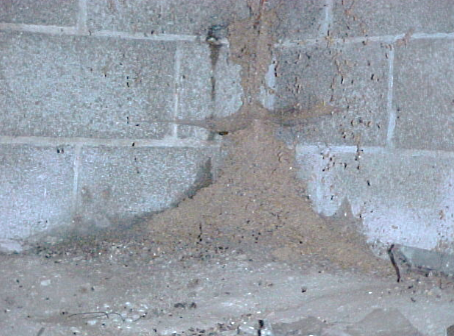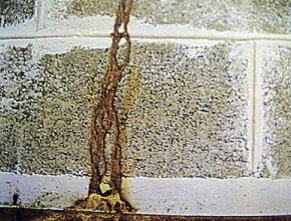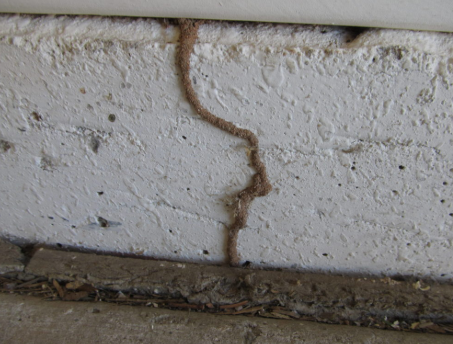A&A PRO INSPECTION SERVICES, INC TERMITE INSPECTIONS
A&A Pro Inspections Services provides Termite Inspections where we conduct an inspection to identify conditions and possible infestation of termites in your home. We search for over fifty different types of wood destroying insects, specifically the 2 main types for homeowners, that may be living in or around your home and report them to you.
Flooring and Wood Structure Damages
Wood destroying insects and organisms are capable of destroying all wood structures in a home. Termites may cause devastating effects on floor supports, structural timbers, wall studs, ceiling supports, subfloors and more.
Proper identification of termites is the only way to effectively control them. In order to do this, A&A Pro Inspection Services, Inc. will come out to inspect your home in all areas suspected or vulnerable to termite infestation. A termite inspection is among the inspection services offered by A&A Pro Inspection Services, Inc. If you have a VA Loan Termite Inspections are required, FHA or Conventional loans don't require but highly recommend getting a termite inspection
Texas Department of Agriculture (TDA) has set laws, rules and mandates for termite inspectors. Such laws instruct the termite inspector to make a visual inspection of the property. We inspect the property, conduct the examination and send a detailed inspection report to you. We come out to your property to identify dead or hollow spots on wood. In addition to that, we also check for any visible damage caused by ground termites and termite droppings. After the inspection is completed, detailed findings and recommendations will be included in our report.
BRIEF FAQ FOR TERMITE INSPECTIONS
What should I expect from a wood destroying insect inspection?
Answer: The first thing you need to know is that any structure containing wood or cellulose material provides a natural food source for subterranean termites. Even structures that are mostly steel and concrete are vulnerable to termite attack. The following list will provide some general conditions conducive to termite infestation: (1) earth-wood contact; (2) firewood stacked against foundation; (3) wood debris in crawl space; (4) wood mulch [within 3 ft. of foundation]; (5) faulty grade; (6) insufficient ventilation; or (7) moisture.
At A&A Pro Inspections Services, our inspector is licensed with the Texas Department of Agriculture where he is educated and licensed to conduct a careful inspection to determine the presence or absence of visible evidence of infestation from wood destroying insects. The inspection will be conducted in those areas which are readily accessible and where infestation is most likely to occur. No inspection is made in areas that require the breaking apart or dismantling/removal of any objects. Therefore, it is not a warranty as to the absence of wood destroying insects. It is not a structural damage report. Evidence of wood destroying insects is noted in the report.
Answer: Nationwide, termites cause over a billion dollars in damage annually-more than all tornadoes, hurricanes and windstorms combined. Because they nibble away slowly from the inside, damage can be very extensive before it's noticed. It's not unusual for a termite to feast on a building throughout a life span of 15 years-and the queen can live and produce eggs for up to 50 years. Undetected and untreated, termites can severely damage and, in time, destroy a home.
Don't termites attack only old, run-down buildings?
Answer: Termites have been found in buildings as early as four days after construction. Every building fabricated wholly or partly of wood is susceptible. Chemical or mechanical barriers can be established in the construction stage to prevent or discourage termite infestations in new homes.
Are there different kinds of termites?
Answer: Entomologists have identified over 2,000 species, 55 of which exist in the United States. But there are only two kinds, basically, that homeowners have to worry about: subterranean termites and drywood termites.
Where and how do termites live?
Answer: All termites subsist on cellulose, which termites get from wood. Termites are social insects with a highly organized caste system, much like ants or bees. Subterranean termites usually live outside the house in underground nests. Subterranean termites use moisture in the earth to survive. Since subterranean termites also need cellulose, they often tunnel into nearby homes to get it. Drywood termites, on the other hand, need no contact with the earth, because their moisture is derived from the moisture in the wood and home. They live right inside the home and can have multiple infestations throughout the home.
Call 281-381-0549 To Book Your Inspection!
We are apart of the Pest Inspection Network
Rodney Adegbenro TDA #790925
Pest Inspection Network, Inc. TPCL #783068





